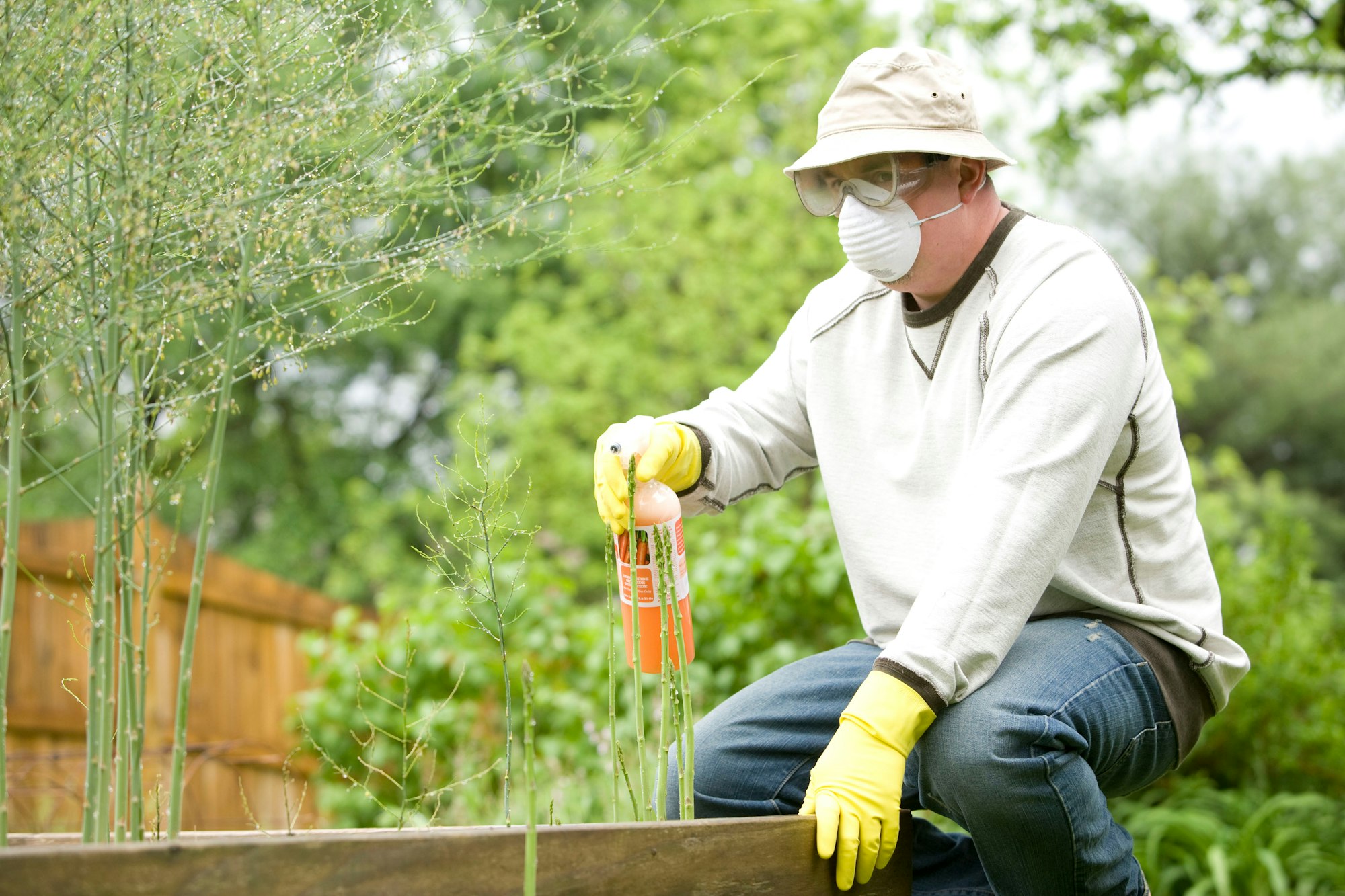City Living Hacks: Safeguarding Your NYC Space From Unwanted Intruders

Living in the heart of New York City offers a dynamic lifestyle that's unmatched, filled with the hustle and bustle of city life, the convenience of close amenities, and the cultural melting pot that is ever so vibrant.
However, this urban dream also comes with its unique set of challenges, particularly when it comes to maintaining a safe and comfortable living space.
Among these challenges is the need to protect your personal haven from unwanted intruders, which not only include potential security threats but also pests that can disrupt the sanctity of your home.
Safeguarding your NYC space requires a combination of vigilance, knowledge, and the right strategies to ensure that your urban oasis remains a serene and secure place to live.
Combating Pests In Your NYC Space
Living in New York City presents a unique set of challenges, especially when it comes to keeping your living space free from unwanted guests like pests.
Whether it's rodents, insects, or other critters, these intruders can pose significant health risks and cause damage to your property.
However, with proactive measures and a strategic approach, you can effectively safeguard your home against these pests.
The key to success lies in prevention, early detection, and timely intervention.
By understanding the behaviors and preferences of common NYC pests, residents can implement targeted strategies to make their homes less inviting to these unwelcome visitors.
Leveraging Online Guides For Pest Prevention
In the digital age, one of the most effective strategies for keeping your home pest-free is to educate yourself using the vast resources available online.
Understanding the importance of finding a relevant and comprehensive online guide for pest prevention can be a game-changer for New York City residents.
These guides offer a wealth of knowledge, including identification of common pests, understanding their behaviors, and implementing proven prevention techniques tailored to urban living conditions.
-
Knowledge is Power: A well-researched online guide equips you with the necessary knowledge to identify potential pest threats specific to NYC and the most effective strategies to prevent them. Understanding the types of pests that are common in urban environments and their entry habits can help you fortify your home more effectively.
-
DIY Prevention Techniques: Many online guides provide do-it-yourself solutions for pest prevention that are cost-effective and easy to implement. From natural remedies to simple home modifications, these resources can guide you through the process of making your home less inviting to pests without the need for professional intervention.
-
Safe and Sustainable Practices: The right online guide emphasizes safe and environmentally friendly pest control methods. This is crucial for ensuring the health and safety of your household and minimizing the ecological impact of your pest prevention efforts. It’s important to adopt practices that do not harm the environment while keeping pests at bay.
-
Community Engagement: Some online platforms also offer forums or discussion boards where residents can share their experiences, tips, and advice on pest prevention. Engaging with a community of like-minded individuals can provide support, innovative ideas, and encouragement to maintain a pest-free living space.
-
Staying Updated: Pest control strategies evolve, and new pests can emerge. Regularly consulting online guides can keep you informed about the latest and most effective pest prevention techniques. It ensures that your methods remain up-to-date and effective against the ever-changing landscape of urban pest management.
Early Detection And Immediate Response
Identifying signs of pest activity early on is crucial in preventing a full-blown infestation in your New York City home.
Early detection allows for a more manageable and less costly response, avoiding the significant damage and health risks associated with larger pest populations.
Being vigilant about monitoring your space for the slightest indications of pests, such as droppings, damage to property, or the pests themselves, enables you to act swiftly to mitigate the issue. Immediate response, whether through home remedies, traps, or contacting a pest control professional, can effectively halt the progression of an infestation.
This proactive stance not only protects your home but also contributes to a healthier living environment by preventing the spread of pests to neighboring units in densely populated urban settings.
Integrating Professional Pest Control
While preventive measures and early interventions are key to maintaining a pest-free environment, there are instances when professional pest control services become necessary.
Experts in pest management are equipped with the knowledge, tools, and techniques to effectively address infestations that have become too advanced for standard home remedies.
Professional exterminators can also offer customized solutions tailored to the specific needs of your NYC home, ensuring that pest control measures are effective and sustainable over time.
Moreover, they can provide valuable insights into long-term prevention strategies, helping to safeguard your space against future invasions.
Integrating professional pest control into your overall strategy ensures a comprehensive approach to maintaining a safe and comfortable urban living space.
Ensuring Hygiene And Safety In NYC Restaurants
In the bustling culinary landscape of New York City, hygiene and safety are paramount for both the dining public and restaurant workers.
The city's health department actively monitors and regulates food establishments to ensure compliance with stringent food safety protocols.
This effort is aimed at protecting consumers from foodborne illnesses and ensuring that restaurant workers operate in a safe environment.
Health Inspections And Public Resources
New York City's Health Department conducts unannounced inspections of restaurants at least once a year to assess compliance with food safety regulations.
The results of these inspections are made available to the public through the ABCEats online tool, where individuals can look up health inspection results for the city's 27,000 restaurants.
These inspections evaluate various aspects of restaurant operations, from food handling and storage to cleanliness and pest control, assigning a score that corresponds to a letter grade displayed at the establishment.
This transparent system encourages restaurants to maintain high standards of hygiene and safety, providing peace of mind to consumers about the cleanliness of the dining spaces they frequent.
Food Safety Guidelines
The city's food safety guidelines emphasize the importance of proper food handling, storage, and preparation to prevent contamination and ensure the safety of the food served.
Key guidelines include the prohibition of bare-hand contact with ready-to-eat foods, the requirement to keep foods at safe temperatures, and the necessity of washing hands thoroughly and frequently.
These practices are designed to minimize the risk of foodborne illnesses, ensuring that food service establishments offer not only delicious but also safe meals to their patrons.
Worker Safety Measures
The dynamic and often fast-paced environment of NYC restaurants poses various risks to employees, including exposure to hot surfaces, sharp objects, and potentially hazardous conditions like slippery floors.
To address these risks, the Health Department provides resources and guidelines focused on restaurant worker safety.
These guidelines cover a range of safety practices, from preventing slips, trips, and falls to avoiding burns and cuts, aiming to reduce the incidence of work-related injuries.
By educating restaurant owners, managers, and employees on these safety measures, the city aims to create safer workplaces for the thousands of individuals who work in the food service industry.
Addressing Health Concerns Related To Pests
Pests, ranging from insects like mosquitoes and ticks to rodents such as mice and rats, pose significant health risks.
These organisms are not just nuisances; they are carriers of diseases that can severely impact human health.
Understanding these risks and taking appropriate measures to mitigate them is crucial for maintaining a healthy living environment.
The Centers for Disease Control and Prevention (CDC), World Health Organization (WHO), and Environmental Protection Agency (EPA) provide extensive guidance on managing pest-related health concerns.
Here's a closer look at the health implications posed by pests and strategies for prevention and control.
Vector-Borne Diseases
Vector-borne diseases are illnesses caused by pathogens and parasites in human populations. These diseases are transmitted by vectors, which include mosquitoes, ticks, and fleas.
For instance, mosquitoes are known carriers of malaria, Zika virus, West Nile virus, and dengue fever.
Ticks carry Lyme disease and Rocky Mountain spotted fever. The key to preventing these diseases lies in controlling the vector populations and protecting individuals from bites.
This involves using insect repellents, wearing protective clothing, and managing environments to reduce breeding grounds for these vectors.
Allergies And Asthma
Certain pests, particularly cockroaches and dust mites, are known to trigger allergies and asthma.
Their droppings, body parts, and saliva contain allergens that can lead to respiratory issues, especially in children and individuals with preexisting respiratory conditions.
To mitigate these health risks, it's important to maintain clean environments, reduce humidity levels, and use air purifiers to minimize exposure to these allergens.
Regular vacuuming with HEPA filters and using allergen-proof mattress and pillow covers can also help manage these allergens in the home.
Foodborne Diseases And Contamination
Rodents and insects can contaminate food supplies with their droppings, urine, and hair, leading to foodborne illnesses.
Diseases such as salmonella and Hantavirus can be spread by pests contaminating food or food preparation surfaces.
Effective pest management in food storage and preparation areas, including sealing food in airtight containers and practicing good hygiene, can prevent contamination.
It's also vital to implement robust pest control measures in both residential and commercial settings to ensure food safety.
Tackling Pest Concerns In NYC
New York City, with its dense population and vast array of buildings, faces a constant battle against pests.
From cockroaches to bed bugs, the city's residents must remain vigilant and informed to maintain a pest-free living environment.
Effective pest management involves understanding the behavior of different pests, implementing preventive measures, and knowing when to seek professional help.
Understanding And Preventing Cockroach Infestations
Cockroaches are among the most common pests in NYC, thriving in various environments but particularly active during warmer months.
The American and German cockroaches are the most prevalent species, each with distinct habits and characteristics.
Prevention focuses on diligent housekeeping, such as sealing potential entry points and maintaining cleanliness, especially in food areas.
Proper trash management and minimizing clutter also play crucial roles in deterring these pests.
The Persistent Challenge Of Bed Bugs
Bed bugs present a unique challenge, as they can infest even the cleanest of spaces and are notorious for their resilience.
Key strategies for preventing bed bug infestations include reducing clutter, vacuuming regularly, and being cautious with shared laundry facilities and second-hand furniture.
Once an infestation is suspected, identifying infested areas and preparing for professional treatment are critical steps.
DIY solutions may offer temporary relief, but professional extermination ensures comprehensive removal.
Ant Management Strategies
Ants, while less destructive than termites or cockroaches, can still be a nuisance in NYC homes.
Preventing ant infestations involves eliminating their food and water sources, keeping kitchens clean, and sealing off entry points.
For existing infestations, ant baits are effective as they target the colony source.
However, for more persistent or destructive species, such as carpenter ants, professional pest control services may be necessary.
Role Of Residents And Property Owners In Pest Management
The collaborative effort between residents and property owners is essential in managing indoor allergens and pests.
Residents are encouraged to maintain clean and dry homes, use garbage cans with tight-fitting lids, and minimize the use of pesticides.
Property owners, especially of buildings with three or more units, must annually inspect units for pests, ensure apartments are pest-free before new tenants move in, and employ Integrated Pest Management (IPM) strategies for safe and effective pest eradication.
Final Remarks
In the bustling heart of New York City, safeguarding your living space from unwanted intruders—ranging from security threats to persistent pests like cockroaches, bed bugs, and ants—requires a multifaceted approach.
Residents and property owners alike must be vigilant, leveraging a blend of knowledge, preventive measures, and professional services to maintain a healthy and secure environment.
Online resources, such as comprehensive guides on pest prevention and management, offer invaluable insights into the behaviors and control strategies for common NYC pests, empowering individuals to take proactive steps towards safeguarding their homes.
Moreover, the role of cleanliness, proper food storage, and structural maintenance cannot be overstated in preventing pest infestations.
Collaborative efforts between residents and property managers, guided by city regulations and health guidelines, further enhance the efficacy of pest management strategies, ensuring that living spaces remain sanctuaries against the backdrop of city life.
In essence, the key to a pest-free urban living space lies in the proactive, informed, and collective actions of the community, ensuring that the vibrancy of city life is not dimmed by the shadow of unwanted guests.








Comments ()